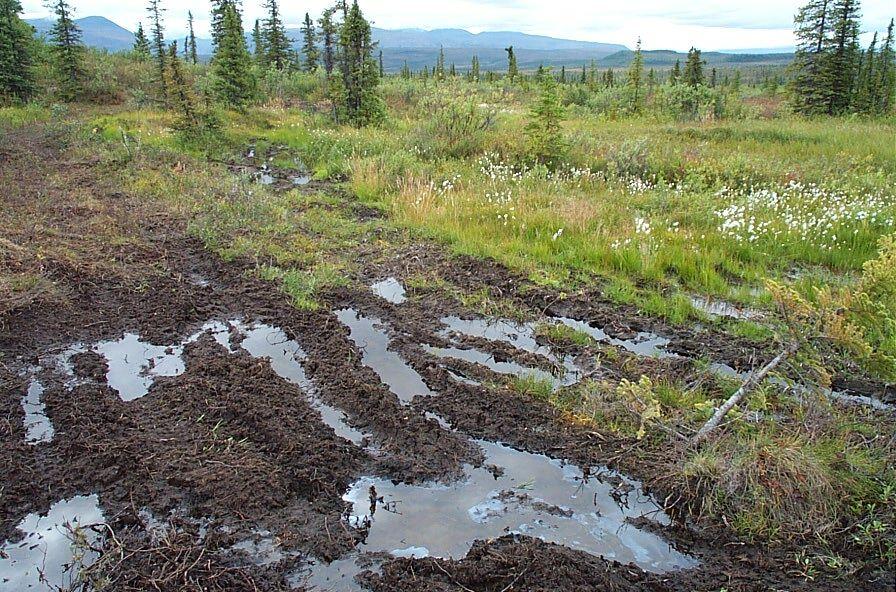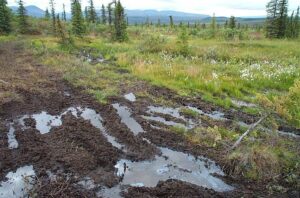
Trustees for Alaska Challenges Recreational ORV Permitting in Wrangell-St. Elias
On June 30, Trustees for Alaska, on behalf of the National Parks Conservation Association, Alaska Center for the Environment, and The Wilderness Society, filed a lawsuit in federal district court challenging the National Park Service’s mismanagement of recreational off-road vehicles (ORVs) in Wrangell-St. Elias National Park and Preserve. The lawsuit seeks to protect Wrangell- St. Elias from damaging and unregulated O RVs by compelling the National Park Service to properly manage recreational use.
Known as the mountain kingdom of North America, Wrangell-St. Elias is the country’s largest national park and a component of the world’s largest protected ecosystem. Along with Glacier Bay National Park and Canada’s Kluane National Park and Tatshenshini-Alsek Provincial Park, Wrangell-St. Elias provides over 24 million acres of protected habitat for flora and fauna.
Wrangell-St. Elias encompasses four mountain ranges, including nine of our nation’s 16 tallest peaks. The park contains numerous glaciers and icefields, and it provides a diverse array of plant communities and wildlife habitat ranging from high alpine tundra to coastal coniferous forest. Much of the park interior is composed of tussock-shrub vegetative communities that are underlain by permafrost and extremely delicate soils. The park supports a wide variety of wildlife ranging from black and brown bears, wolves, caribou, moose, Dall sheep, and mountain goats to sea lions and harbor seals.
T
he park also has the unfortunate distinction of being the only National Park System unit where recreational ORVs are allowed to travel off established roads and parking areas within park boundaries. While ORV use may be appropriate in many areas throughout Alaska, unregulated recreational ORV use is not compatible with the mandate that our national parks be preserved for future generations. Yet, the National Park Service issues annual recreational ORV permits for Wrangell-St. Elias despite the growing and unmitigated impacts of recreational ORV use on park resources and values. In issuing these permits, the National Park Service continues to ignore existing laws and regulations designed to protect park resources and values for present and future generations.
The National Park Service currently allows recreational ORV use on nine trails within the park: Suslota Lake, Tanada Lake, Caribou Creek, Lost Lake, Trail Creek, Reeve Field, Boomerang Lake, Soda Lake, and Copper Lake. Most of the recreational ORV use occurs on trails accessed via the Nabesna Road on the north side of the park, where it disrupts the natural environment and impacts the experience of other visitors. Many trails have scarred tundra with an ever-widening muddy mess, sometimes several hundred yards wide. Not only are these impacts eyesores for park visitors, but they also severely damage vegetation, disrupt wildlife, and compromise water quality in the park.
The lawsuit does not seek to restrict access by the local subsistence users living in resident zone communities around Wrangell-St. Elias National Park. Instead, the purpose of the lawsuit is to compel the National Park Service to address recreational ORV impacts, as well as to force the National Park Service to follow its existing laws and regulations in managing recreational ORV use.
Clients: National Parks Conservation Association, Alaska Center for the Environment, and The Wilderness Society



